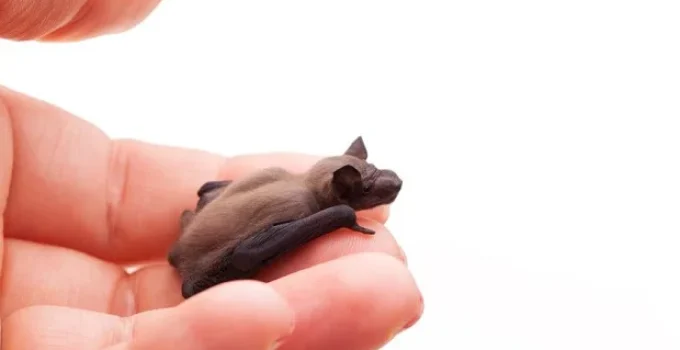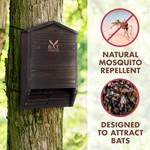How Much Do Bats Weigh?
Answer at a Glance: Bats weigh from as little as 0.07 ounces to as much as 3 pounds.
Dig Deeper
- Bat Weights Are Extremely Diverse
- Bumblee Bats Weigh the Least
- The Giant Golden-crowned Flying Fox Weighs the Most
- References
Bat Weights Are Extremely Diverse
With nearly 1,400 different bat species of varying sizes and weights worldwide, the diversity of these creatures is truly fascinating. The most common bat worldwide in terms of population numbers, the straw-coloured fruit bat of Africa, weighs that of an orange at 8.8 to 12.3 ounces. On the other hand, the most common bat in North America, the little brown bat, is a mere .18 to .49 ounces, the weight of a stick of chewing gum. [1] [2] [3] [4]
Bumblebee Bats Weigh the Least
The bumblebee bat, also known as Kitti’s Hog-nosed Bat, is a marvel of nature. Measuring only one inch in length and weighing a mere 2 grams (0.07 ounces), it’s lighter than a penny and holds the distinction of the world’s smallest mammal. This extraordinary creature is extremely rare, found only in the limestone caves along the Thailand-Myanmar border. It lacks a tail and utilizes its ability to hover to capture insects and spiders, foraging for food within a mile of its roost. IUCN Red List currently lists this bat species as vulnerable. [5]
The Giant Golden-crowned Flying Fox Weighs the Most
The largest bat, the flying fox, can have a wingspan of five or more feet and weigh more than three pounds. Commonly called a fruit bat, the flying fox (genus Pteropus) includes around 65 species of bats. They populate Southeast Asia, Australia, the Pacific Islands, and the Indian subcontinent. [6]
They range in size from the little golden-mantled flying foxes that weigh as little as five ounces to the giant golden-crowned flying fox that can weigh up to three pounds. [7][8]
Unlike most other bat species, flying foxes do not use echolocation to locate their food but instead rely on their large eyes and a keen sense of hearing. They primarily feed on fruit and nectar, playing a crucial role in seed dispersal and pollination of forests. The IUCN classifies 15 species as vulnerable and 11 as endangered. [9]
References
- [1] US Department of the Interior – “13 Awesome Facts about Bats.”
- [2] Wikipedia – “List of Bats by Population.”
- [3] University of Michigan – Museum of Zoology – “Eidolon helvum.”
- [4] University of Michigan – Museum of Zoology – “Myotis lucifugus.”
- [5] University of Michigan – Museum of Zoology – “Craseonycteris thonglongyai.”
- [6][9] Britannica – “Flying Fox.”
- [7] University of Michigan – Museum of Zoology – “Pteropus pumilus.”
- [8] Bat Conservation International – “Acerodon jubatus.”
Related Products
Bat House for Outdoors – 2 Large Chambers Bat Box for Outside & Tree – Black
Bats are vital as pollinators & seed dispensers, which makes them crucial for our ecosystems and functional economic agricultures. Set up a bat house to support these versatile creatures.

